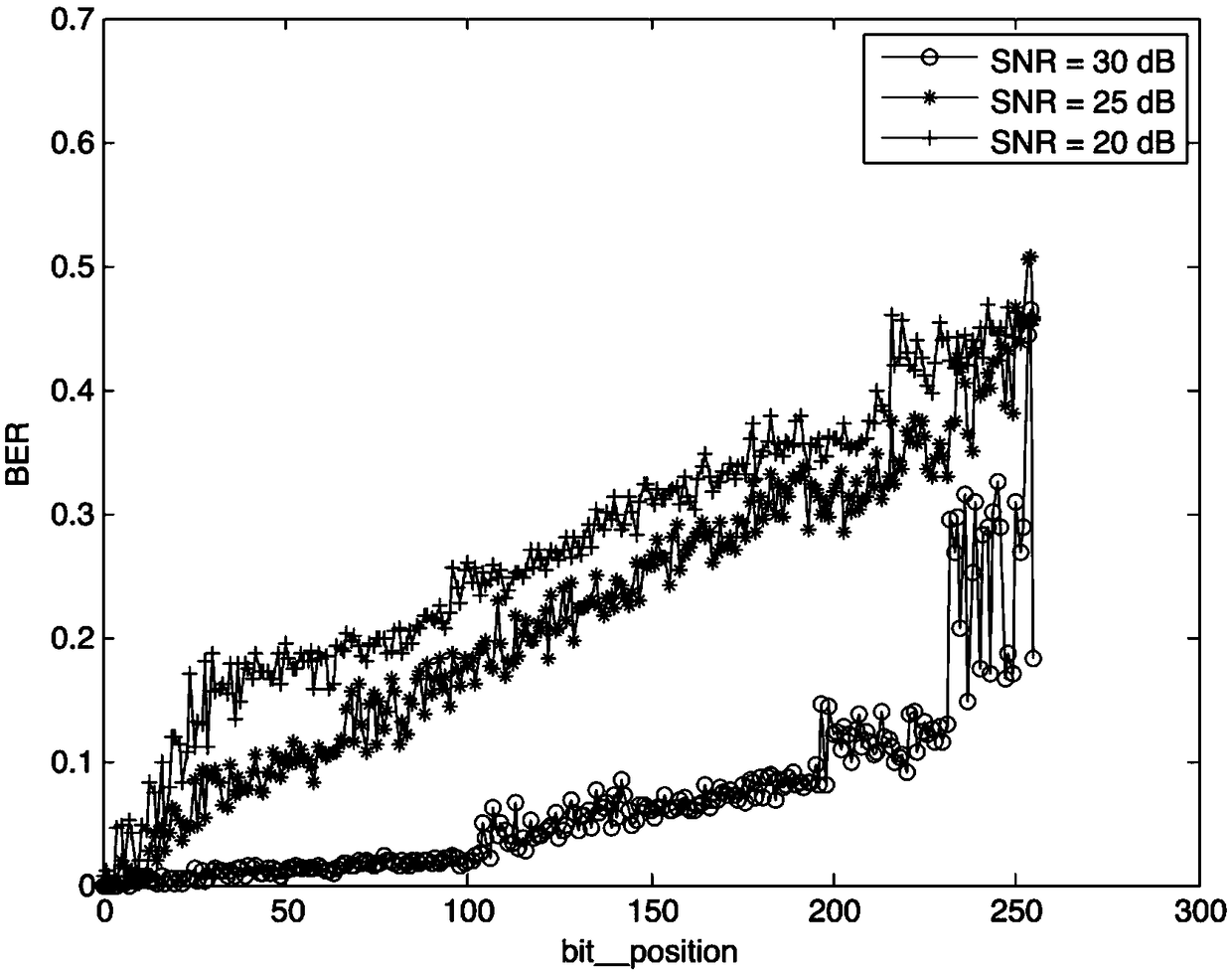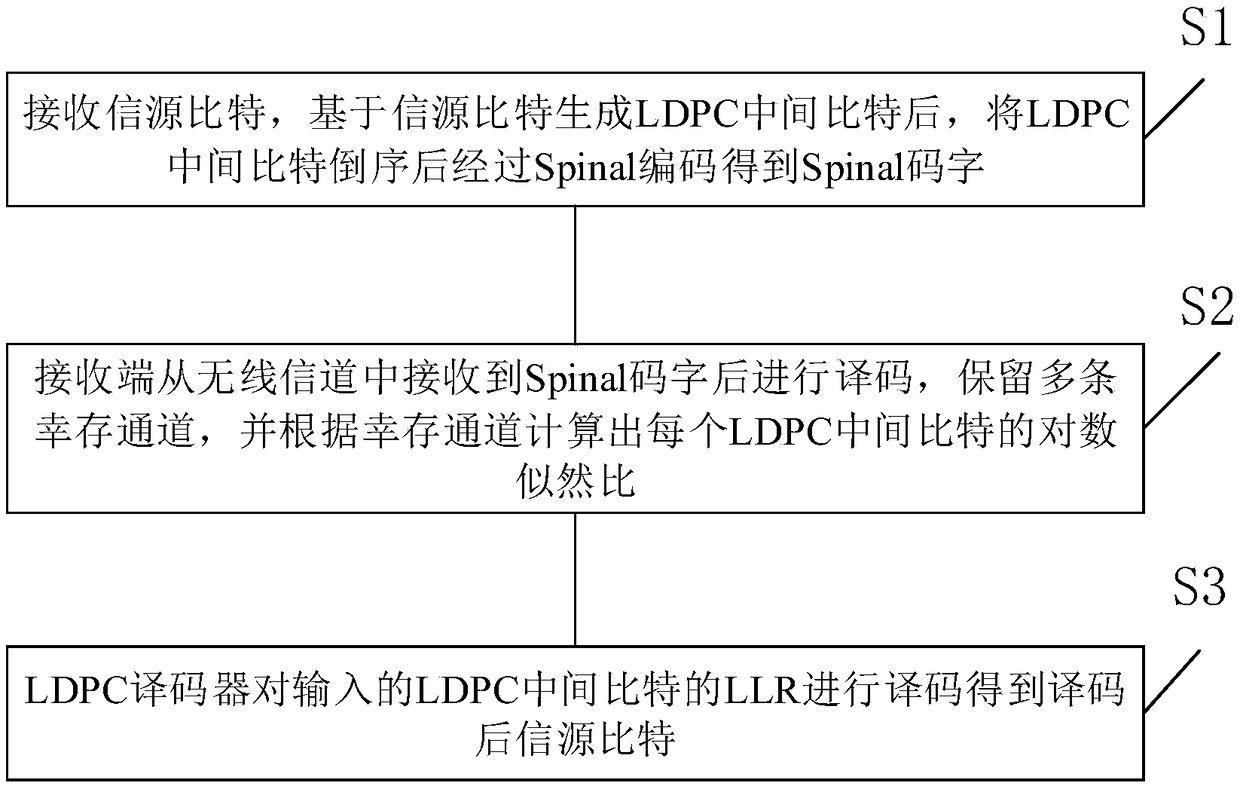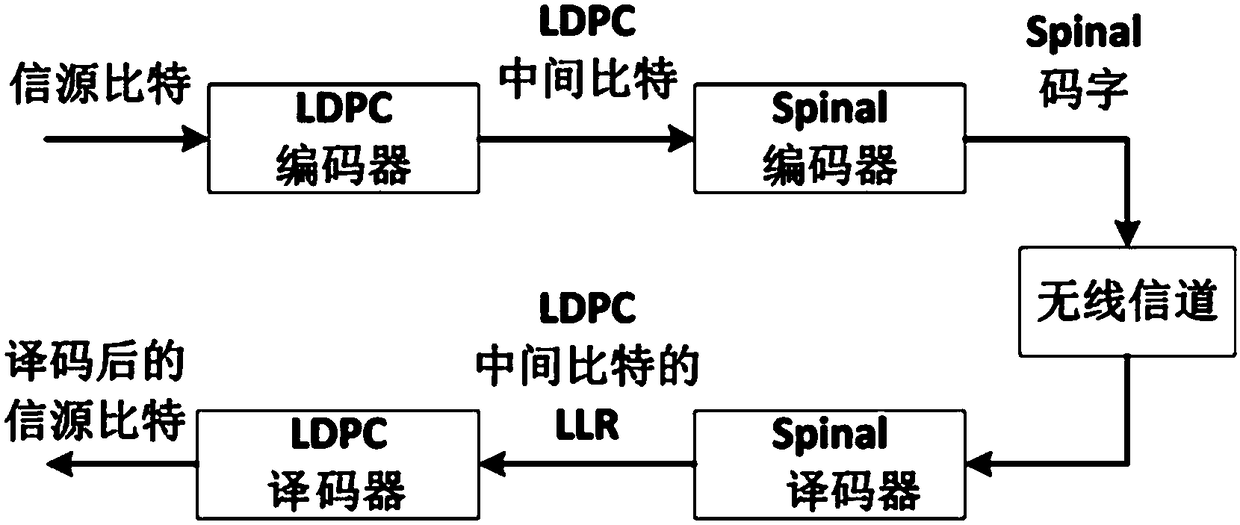Cascaded Spinal code coding and decoding method, system and device
A coding-decoding and cascading technology, applied in the field of coding-decoding algorithms, can solve problems such as unsatisfactory throughput and BER of Spinal code, unrestricted retransmission of Spinal code, incorrect source protection, etc.
- Summary
- Abstract
- Description
- Claims
- Application Information
AI Technical Summary
Problems solved by technology
Method used
Image
Examples
Embodiment Construction
[0064] The present invention will be described in detail below in conjunction with the accompanying drawings and specific embodiments. This embodiment is carried out on the premise of the technical solution of the present invention, and detailed implementation and specific operation process are given, but the protection scope of the present invention is not limited to the following embodiments.
[0065] like figure 1 As shown, the existing Spinal code has an unequal protection characteristic for the input bits. exist figure 1 Among them, the source length of one frame is 256 bits, k=4, c=6, B=256. Spinal encoding is directly performed on the source of this frame to obtain the Spinal code words, and these Spinals are decoded with the existing bubble decoding algorithm after passing through the AWGN (Additive White Gaussian Noise) channel. In the experiment, a total of 10,000 frame sources are used, and then the BER of each source bit after decoding is counted. from figure ...
PUM
 Login to View More
Login to View More Abstract
Description
Claims
Application Information
 Login to View More
Login to View More - R&D
- Intellectual Property
- Life Sciences
- Materials
- Tech Scout
- Unparalleled Data Quality
- Higher Quality Content
- 60% Fewer Hallucinations
Browse by: Latest US Patents, China's latest patents, Technical Efficacy Thesaurus, Application Domain, Technology Topic, Popular Technical Reports.
© 2025 PatSnap. All rights reserved.Legal|Privacy policy|Modern Slavery Act Transparency Statement|Sitemap|About US| Contact US: help@patsnap.com



